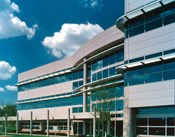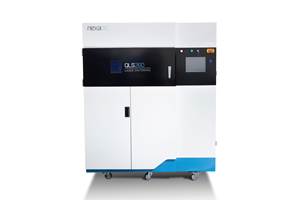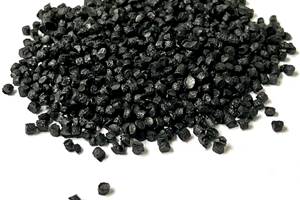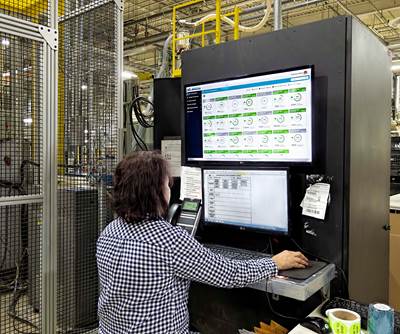Polyurethanes: Bio-Based Materials Capture Attention
The hot topic at this year’s PUR conference was rigid and flexible foams with increased biobased content. There was also news in one-component cast elastomers, surfactants, and TPUs.
With the conversion to “cleaner” blowing agents firmly in place for polyurethane foam production, there is now a strong movement under way to use bio-based renewable resources as raw-material feedstocks. The goals are to reduce demand for non-renewable fossil fuels and to cut production of carbon dioxide “greenhouse gas” to fend off global warming. These were important themes in technical papers presented in Orlando, Fla., at the recent 50th annual conference of the former Alliance of the Polyurethanes Industry (API), now called the Center for the Polyurethanes Industry (CPI) within the American Chemistry Council.
Several presentations dealt with developments in “natural-oil polyols,” or NOPs, which are produced from renewable raw materials such as soybean and castor oil and can be used to decrease the petrochemical content of PUR formulations. According to industry estimates, manufacturing NOPs vs. conventional polyester and polyether polyols produces 36% less global-warming emissions, 61% less non-renewable energy use, and 23% less total energy demand.
Conference presentations on NOPs underscored the growing interest among end-users to produce PUR products that are environmentally friendly, particularly in construction, automotive, and home-furnishing markets. While NOPs so far have been aimed largely at slabstock foams, significant strides are being made to develop NOPs that can be easily incorporated in the more challenging molded and rigid foam formulations.
Another initiative comes from the U.S. Federal Procurement Process, which has provisions favoring bio-based over petroleum-based products. For example, in wall construction, the Dept. of Agriculture (USDA) has proposed a minimum bio-based content of 8% for a product to be classified as bio-based for federal procurement purposes. To help standardize the reporting of bio-based content, ASTM’s Subcommitte D20.96 on Biobased Products and Environmentally Degradable Plastics recently published the “ASTM Biobased Content Briefing Paper,” which contains pertinent definitions and examples for determining bio-based content.
NOPs for rigid foams
One breakthrough in NOP technology comes from Bayer MaterialScience, which reported that it can produce NOPs that overcome some drawbacks that have heretofore limited their use. To date, NOPs typically have had low hydroxyl functionalities and relatively high equivalent weight, which make them more suitable for use in solid urethanes and flexible foams, not rigid insulating foams. In addition they lack solubility for blowing agents such as hydrocarbons or conventional polyols.
Using a proprietary manufacturing process, Bayer reports it has produced NOPs that are well suited to use in rigid insulating foams. These NOPs reportedly have a high bio-based content and excellent compatibility with hydrocarbon blowing agents and conventional polyols, and they can make foams with a wide range of physical properties.
Bayer notes that while sucrose-based polyether polyols have long been available for rigid foams, they typically have up to 30% renewable content. But, once the rigid foam is made, the overall renewable content drops to a level that may not meet the proposed USDA guideline of 8% for wall construction. Bayer has produced NOPs with renewable contents in the 40% to 70% range, which permits making rigid foams with renewable contents of 10% to 15% or more.
According to Steven Schilling in Bayer business development for insulation systems, rigid foams based on these new NOPs can be used in both building and appliance insulation. “We believe we have a unique polyol that, with its combination of high functionality and hydroxyl number, will be a very versatile raw material for making polyurethane foams. Of course, for construction foams, flame retardants will need to be used to obtain the necessary burn ratings,” Schilling said.
Bayer has produced NOPs with hydroxyl functionalities from 2 to 5 and equivalent weights from 140 to 280. It can start up full production of these NOPs (which will include grades for flexible slabstock) in 2008, depending on market demand. A key aspect is that these NOPs can be manufactured in existing polyol production lines, whereas other NOPs often require different or modified equipment.
Bayer researchers say these NOPs work with blowing agents such as cyclopentane, HFCs, and water in rigid foams whose properties are generally comparable to those of conventional PUR foams. The researchers also have made rigid foams blown with iso-pentane and n-pentane, which are typically not usable with conventional polyols due to their low solubility in these blowing agents.
Field trials in appliances and construction are under way. In Europe, a major appliance manufacturer has successfully employed a PUR foam formulation made with Bayer’s NOPs. It is anticipated that the use of these polyols will grow in the construction arena as architects and builders strive to make their buildings more “green.” Potential applications include metal-faced panels, water heaters, pipe insulation, spray foam insulation, and coolers.
Urethane Soy Systems Co. (USSC) reported on its recent “breakthrough” in NOPs, aimed specifically at PUR spray foam insulation. The company has been developing soy-based polyol formulations for a decade and sells them under the Soyol tradename, primarily for flexible foam. USSC has ongoing R&D in NOPs for rigid foams, elastomers, composites, and prepolymer technologies.
According to the researchers, USSC’s new SoyTherm 50 spray foam wall insulation system contains 25% Soyol polyol and has met the same requirements as standard petroleum-based spray foam systems. SoyTherm 50 SPF reportedly meets the minimum criteria of the International Code Council (ICC) for open-celled, low-density, wall insulation products, including heat resistance, density, tensile strength, closed-cell content, dimensional stability, and surface burning characteristics. Soyol polyols can also be used in other SPF systems, such as USSC’s medium density SoyTherm 100 formulation, which also is said to match ICC’s property and performance requirements.
Use of Soyol polyols in SPF systems reportedly enables spray contractors to meet the guidelines of 8% bio-content in wall construction. Advantages that have been observed in recent field applications include improved adhesion, increased interlaminar shear strength, and a wider processing window with regard to temperatures and pressures.
Vertellus Performance Materials reported on a new family of castor-oil based polyols that expand the use of such products to a wider range of applications. Castor oil has long been used directly as a polyol, particularly in PUR coatings, adhesives, and sealants, due to its ability to impart hydrolytic stability, shock absorption, moisture resistance, low-temperature flexibility, and electrical insulating properties. It is the only NOP today that is produced directly from a plant source and that has a consistent chemical composition (90% ricinoleic acid). All other NOPs are mixtures of unsaturated fatty acids that must be chemically modified to make polyols.
Since castor oil is a discreet compound, it produces specific physical properties that can be only slightly varied through choice of isocyanate compounds. To obtain significantly differing foam properties in the cured state, the polyol’s structure, functionality, and molecular weight must be modified. With its new group of polyols, Vertellus showed how this can be accomplished either by recombining castor oil’s building blocks or reacting them with other materials. These derived polyols transform the castor oil molecule, making it useful in coatings and rigid foams that require high strength and in flexible foams, sealants, and adhesives where flexibility and lower hardness are desired.
The company’s Polycin castor-oil-derived polyols, which include the GR series launched in 2006 and the new DTM series, range in molecular weight from 370 to 3500 and in hydroxyl content from 400 down to 35. According to Vertellus researchers, resulting PURs range from high Shore D to low Shore A hardness. The GR glycerin ricinoleate polyol series is derived only from the building blocks of castor oil and results in a wide range of physical properties. The newer Polycin DTM series polyols (D for diols, T for triols, and M for multi-functional polyols) are based on ricinoleic acid combined with glycerin and other glycols to produce compounds that reportedly give castor oil new dimensions in performance.
NOPs for automotive
Cargill Industrial Bio-Products together with Ontario-based Woodbridge Foam Corp., a leading manufacturer of urethane automotive parts, reported on their joint efforts with Cargill’s BiOH polyols, which are derived primarily from soybean and other vegetable oils. Woodbridge has employed these polyols in production of slabstock foams. The current R&D goal is to produce automotive flexible molded foams with high bio-content.
NOPs, particulary soybean-based, are highly hydrophobic and, at high use levels (20 to 40 php), will significantly affect the compatibility of the mixture. The researchers noted that to achieve good processing and useful foam physical properties, formulating at various levels of bio-content requires establishing a fine balance in both the polyol blend and the additives package. In their recent work, they evaluated the effect of two NOPs from Cargill’s BiOH technology in MDI-based molded foams. (Similar efforts are under way in TDI-based foams).
MDI molded foams were made with polyol blends that had various ratios of the two BiOH polyols in combination with a typical polyether polyol. All passed the standard tests for fogging, odor, staining, and flammability. By adequately adjusting the blend composition, the researchers showed they could replace as much as 40% of the petroleum-based polyol with NOPs. This translated into 25% by weight renewable material in the final foam. Test results showed this foam to have physical properties—including tear strength, tensile strength, elongation, and compressive properties—normally considered acceptable for automotive applications.
Researchers from Dow Chemical’s automotive group reported on continuing development of NOP-based PUR materials for automotive applications. Dow recently scaled up to produce a full line of NOPs for flexible molded foams and elastomers. Combining its own polyol know-how with technology originally developed by Union Carbide, Dow came up with a specialized process that produces tailored polyol blends. In its initial stage earlier this year, Dow launched NOPs made with a significant percent of soybean oil aimed at flexible slabstock. They have been demonstrated to match or exceed the performance of conventional polyols, and are said to address earlier performance challenges with NOPs, such as retaining tensile strength, resiliency, and compression set.
Using NOPs in combination with its existing product portfolio, Dow Automotive has created polyol systems that meet OEMs’ requirements for use in headrests, armrests, NVH (noise, vibration, harshness) foams, and RIM fascia. Dow researchers reported that they were able to achieve renewable content in these PUR formulations from 10% to 28% with minimal negative impact on final part performance either in processing at the Tier 1 level or in use on the vehicle. These formulations are currently being tested with Dow’s automotive development partners.
One-component elastomers
Chemtura unveiled a novel family of one-component urethane systems said to offer processing advantages in a range of elastomer applications ranging from abrasion-resistant coatings to very large castings, including higher hardness components. Chemtura’s Adiprene K is based on a TDI prepolymer with low free TDI and a blocked curative composed of methylene dianiline and sodium chloride. Historically, this compound has been utilized with conventional prepolymers for molding thin articles. However, Chemtura’s recent R&D shows that this blocked curative in conjunction with low-free-monomer prepolymers has new potential in applications requiring long pour times and large cross-sections.
Advantages claimed for Adiprene K include long pot life, consistent mix ratio, no curative melting or dusting, low capital investment (no metering/mixing machine required), fast curing and demolding of small parts, and ability to cast large or intricate parts. According to the company, only slight agitation is required to ensure homogeneity. Beyond that, processors need only to pour from the container into a mold. The material is heat-activated, so once the mold is hot enough (around 115 C), the curative will become active and the material will cure into a tough elastomer.
Says Chris Maupin, commercial development manager for urethanes, “Our primary goal is not to replace typical two-component urethane systems, but rather to expand the current urethane market into areas where materials such as rubber or other elastomers are used.” For example, processors are expected to get better productivity on small, thin parts, such as belting and seals, because it would be easy to conduct heat from the mold into the thin cross-section of the part. Once the material is activated, the cure is extremely fast.
The one-component urethanes are also useful for very large parts due to their virtually infinite pot life, whereas it can be challenging to produce such parts with two-component urethanes because it is difficult to fill the mold before the material has started to cure. After the mold is filled with the one-component urethane, it can then be put into an oven or otherwise heated to cure the part with none of the typical voids, flow lines, or knit lines, according to Maupin. Also, this material allows for convenient batch mixing instead of requiring an expensive, high-volume meter/mix machine. Adiprene K also can be used to produce coatings for such typical hot-cast urethane or rubber applications as roll coverings and chute liners.
News in surfactants
Silicone surfactants optimized for low-density microcellular foam and rigid foam were launched by Momentive Performance Materials. Niax L-1501, L1502, L-1503, and L-1504 comprise a new family said to offer improved performance beyond the current industry standard for low-density PUR foam in automotive and footwear applications. Described as “cell regulators” by Momentive, they have have potential in a variety of formulations and across a wide range of microcellular foam densities.
L-1501 appears to provide the broadest latitude in use level and the greatest degree of cell opening, while L-1502 may help improve skin formation. L-1504 looks to be the most cost-effective alternative within a narrower use range, while L-1503 appears to be a cost-effective alternative for automotive applications where reduced silicone fugitivity is required.
Below a foam density of 0.32 g/cc, cell-regulating surfactants tend to work synergistically with shear-stabilizing surfactants such as Momentive’s Niax L-1505 in polyester-based formulations or L-1609 in polyether systems (where it reduces cell collapse and improves skin formation). L-1506 is the most cost-effective option for both polyester and polyether systems.
In addition, Momentive’s new Y-10645 is a non-hydrolyzable silicone copolymer for rigid foams used in laminated boardstock with flexible or rigid metal facings and buns blown with hydrocarbons. It has been shown to substantially increase emulsion stability of the PUR formulation and to provide excellent foam stabilization and extremely fine cell structure at use levels of 1.5 to 2.5 php.
Related Content
Fast-Cycling Selective Laser Sintering System
Nexa3D announced the QLS 260 for metal and polymer production.
Read MoreEther-Based TPUs for Broad Range of Industry Applications
BASF’s Elastollan 1400 TPU series can be used for applications ranging from railway pads, hoses and profiles to show soles.
Read MoreTPE Made with 50% PCR Derived from End-of-Life Tires
Prism Worldwide has commercialized its first TPE with this type of recycled content based on its patented technology.
Read MoreBiobased Thermoplastic Copolyester
Celanese launches Hytrel TPC RS40F2 for foamed athletic footwear.
Read MoreRead Next
Beyond Prototypes: 8 Ways the Plastics Industry Is Using 3D Printing
Plastics processors are finding applications for 3D printing around the plant and across the supply chain. Here are 8 examples to look for at NPE2024.
Read MorePeople 4.0 – How to Get Buy-In from Your Staff for Industry 4.0 Systems
Implementing a production monitoring system as the foundation of a ‘smart factory’ is about integrating people with new technology as much as it is about integrating machines and computers. Here are tips from a company that has gone through the process.
Read More


















